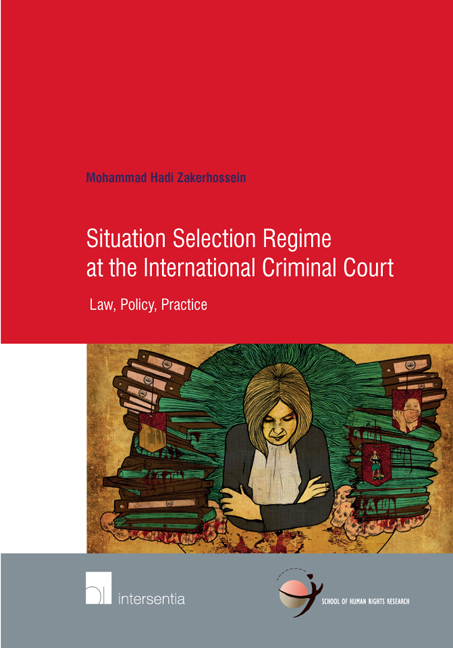Book contents
- Frontmatter
- Contents
- Acknowledgment
- Abbreviations
- General Introduction
- Part One Formulating the Concept of Situation in the Rome Statute Sense
- Part two Situation Selection Process
- Part three Situation Selection Criteria
- Part Four Situation Selection In Light Of Expressivism
- Conclusion
- Bibliography
- ICC Case Tables
- OTP Documents
- About the Author
- School of Human Rights Research Series
Part two - Situation Selection Process
Published online by Cambridge University Press: 13 October 2018
- Frontmatter
- Contents
- Acknowledgment
- Abbreviations
- General Introduction
- Part One Formulating the Concept of Situation in the Rome Statute Sense
- Part two Situation Selection Process
- Part three Situation Selection Criteria
- Part Four Situation Selection In Light Of Expressivism
- Conclusion
- Bibliography
- ICC Case Tables
- OTP Documents
- About the Author
- School of Human Rights Research Series
Summary
The situation selection has two main pillars: process and criteria. The first part of this research conceptualized the situation concept in the sense enshrined in the Rome Statute. The current part addresses the question of how a situation is procedurally selected. The process of the situation selection begins with the trigger mechanism and ends when the Prosecutor determines whether to initiate an investigation. Usually, the law of procedure captures little attention. This is not different for the ICC. The procedural aspect of the situation selection has grabbed scant attention in the literature, whereas it deserves more clarification. This section aims at furthering the clarification on the process of the situation selection in the architecture of the Court. The starting point of the situation selection process is the trigger mechanism that is addressed in Chapter I. Chapter II introduces a missing stage in the process of the situation selection, namely the identification phase, which is a bridge between the trigger mechanism and the preliminary examination. This phase has some important functions that are necessary for the functioning of the OTP. The preliminary examination as the heart of the situation selection process is studied in Chapter III. The preliminary examination is the mechanism in which a situation is selected. The final chapter of this part inquires about the determination phase, when the Prosecutor determines whether to initiate an investigation or to leave it. During this stage, the judicial review of the Prosecutor's decisions emerges.
- Type
- Chapter
- Information
- Situation Selection Regime at the International Criminal CourtLaw, Policy, Practice, pp. 53 - 56Publisher: IntersentiaPrint publication year: 2017

